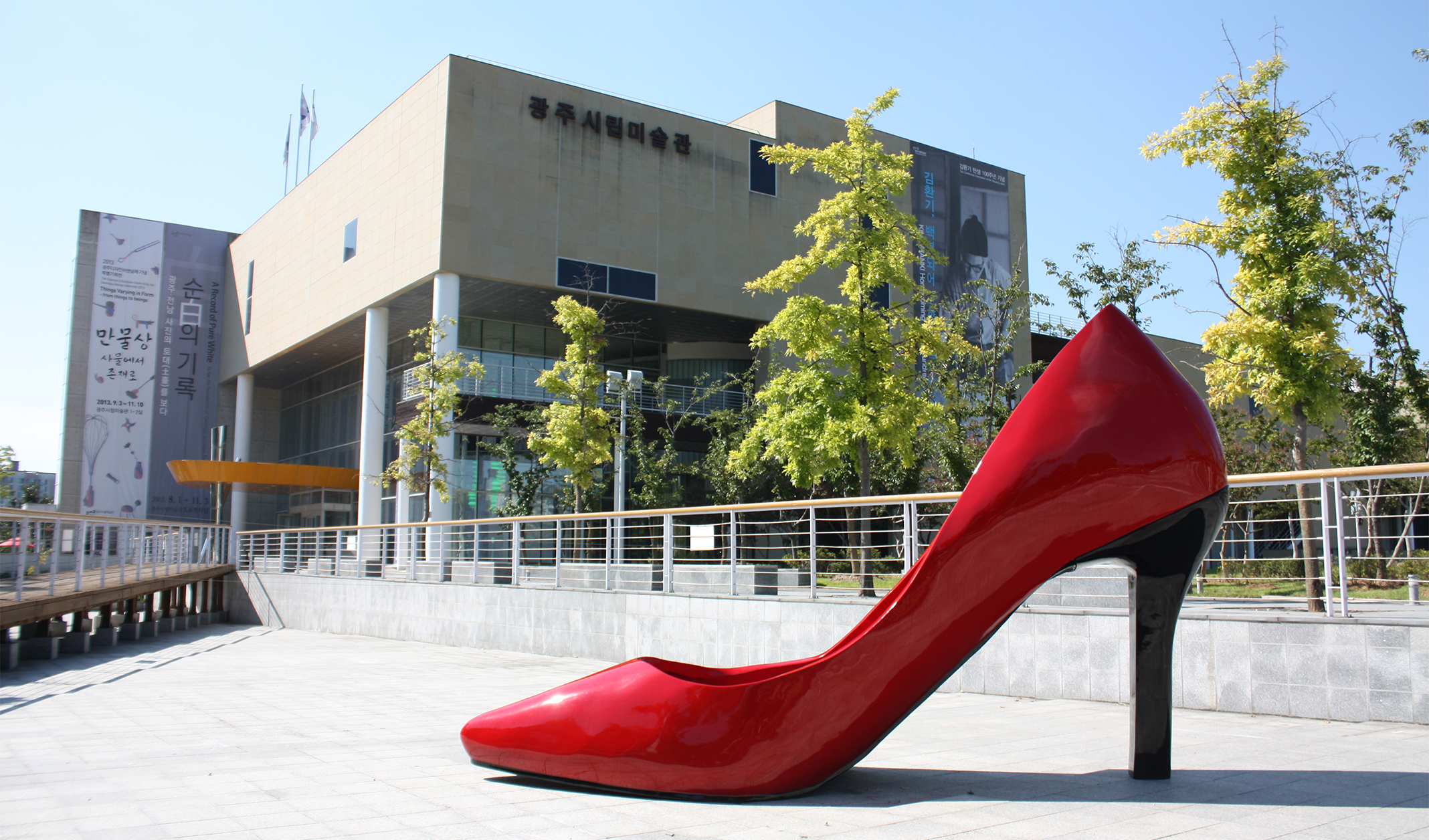Lee Maelee: Messenger of “Poetry Delivery”
Interview by Jennis Kang.
Wolchul-san (월출산), a national park, has been called a spiritual mountain due to its many quaint rocks and cliffs. The mountain encompasses the villages of Yeongam and Gangjin. “Wolchul” (月出) means “moon rising” in Chinese characters. If you see the moon rising from the Yeongam side, you might feel like you are viewing the beauty of a traditional Korean painting.
With just a 50-minute drive to the south from Gwangju, you can see the rocky peaks of Wolchul-san in Yeongam. If you pass by Yeongam and go through the Pulchijae Tunnel, you come to Gangjin, which provides another beautiful view of the mountain. To me, Wolchul-san viewed from the Yeongam side is like a majestic father, while the mountain from the Gangjin side is a soft mother. People say that Wolchul-san used to have 99 temples cradled within its peaks and valleys. About a thousand years ago, there was a large temple complex called Wollam-sa (월남사) on the Gangjin side. Now the temple site has only a single stone pagoda to attest to its majesty of years gone by. When I first visited Wollam-sa more than a decade ago, this three-tiered granite pagoda stood alone in the temple ruins. I was touched by the large pagoda standing firm with mysterious-colored moss residing harmoniously on the granite and with the heights of Wolchul-san towering in the distance.
It occurred to me that the pagoda had been watching all kinds of lives coming and going by that very spot for a thousand years. I could feel the sacredness of the ten-century-old pagoda. Since then, I have often gone back to the ruins of Wollam-sa.
In 2017, according to the Cultural Heritage Administration’s assessment, the pagoda had to be repaired to prevent it from collapsing. The Cultural Heritage Administration also excavated the area in search of artifacts. For this purpose, several houses built on the ruins needed to be removed.
This fall, after a three-year absence, I met the three-tiered stone pagoda once again. I discovered that there is someone who loves the pagoda and temple ruins as much or more than I do. She is Lee Maelee (이매리), a contemporary artist. I had previously seen her “Red Shoe” sculpture at the Gwangju Museum of Art. I also found that Lee has been working with the ruins of Wollam-sa. I wondered why she, as an artist, was attracted to the temple ruins, and how ancient temple ruins found expression in contemporary art. So, I went to her recent exhibition.
Luckily, I was able to meet Lee at the exhibition. We talked about the pagoda and the temple ruins for over an hour, and I felt so lucky to be able to interview her for the Gwangju News. She said the ruins of Wollam-sa were the location of her mother’s hometown. Her mother was born and grew up right on the temple site. For over 400 years, there existed a small village that formed on the site of Wollam-sa after its temple buildings had been burned down during the Japanese Invasion (Imjin-waeran, 임진왜란) of Korea in 1592. Here is how our interview went.
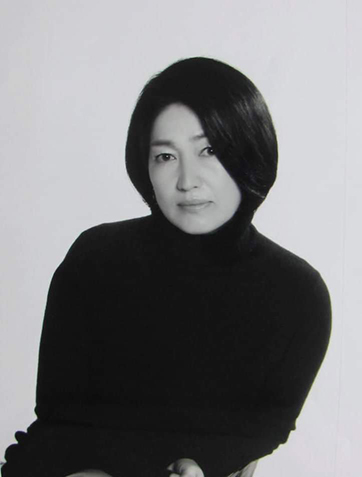
Jennis Kang: When you were young, did you live in the town of Wollam-ri?
Lee Maelee: My mother was pregnant with me while she lived there. Wollam-sa is where my ancestors lived and where I was conceived. My mother left the village with my father when he started working as a teacher. My original residence was 931 Wollam-ri, Gangjin, South Jeolla Province. I used to visit the site of Wollam-sa, where my parents’ families lived. After getting off the bus, I would pass the three-tiered stone pagoda to go to my relatives’ place. In those days, I always wondered about my ancestors: what they looked like and what their lives were like. I wanted to draw their faces if I could. On one rainy day when I was about six and on my way to my grandparents’ place, I walked behind my father, and there were footprints in the spots where he walked. This caused me to suddenly think that my ancestors had also left countless invisible footprints on this land – this land that represented my ancestors.
So, it was sad for me to think that the traces of my ancestors were disappearing. Restoring the ruins of the 1,000-year-old temple is important, I know, but where can we find the history of the people who lived on the site for five centuries? So, I express it in my works called Poetry Delivery.
Jennis: Poetry Delivery [시 배달] – what does this mean?
Lee Maelee: As a visual artist, I borrowed the literary genre of poetry. The space and time that I remembered has disappeared, and I thought about being born and disappearing in layer after layer. People record history in text to deliver the past to someone in the future. So, I incorporated parts of the “Diamond Sutra” and the “Book of Genesis,” which contain the origins of mankind, on photos of the Wollam-sa ruins. I also incorporated William Blake’s epics in the painting of Homo erectus, the being who walked upright and used fire. I thought that there were many similar stories in the world like those of the Wollam-sa ruins, so I made videos with people from all over the world delivering poetry in their own languages containing the creation and extinction of their own histories.
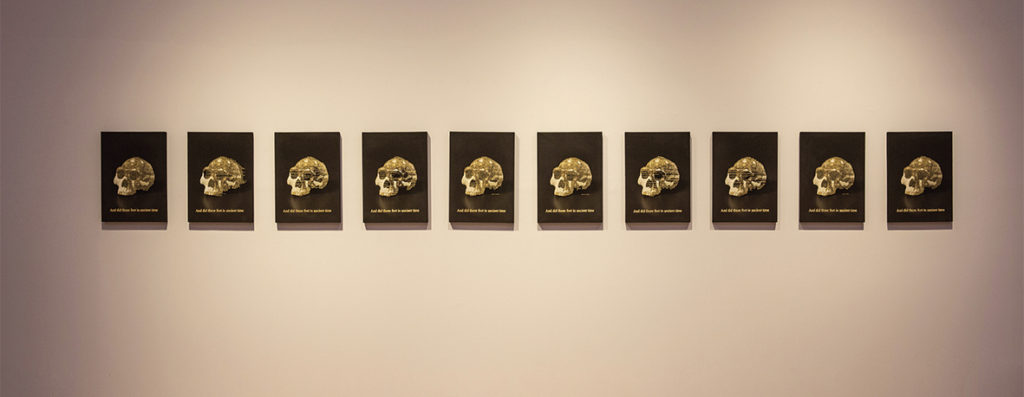
Jennis: When did you start working on the Wollam-sa ruins, and do you have any projects in process?
Lee Maelee: Since 2012, I have been working on the Poetry Delivery project. I have often traveled to the excavation site in Wollam-ri to take pictures. During the excavation, the ground was covered with huge plastic tarpaulins. But on the very day that I took a drone to take my last photos, all the ground was suddenly exposed because they were planning to cover the site with topsoil and sow it with grass seed the next day. It was amazing to see the bare ground; I felt that the land itself was giving me a chance to deliver its stories.
Jennis: You say you felt like you were chosen as a messenger. Do you have any stories to deliver to us?
Lee Maelee: Well, while I was growing up, I heard many stories from my parents. My mother lost her father when she was 11. My grandfather, who was a landholder, suffered the same fate as that carried out by the Red Guards of China: He and his brother were killed. His young daughter, my mother, was also summoned four times to stand trial, and each time, her schoolteacher asked them to save the little child’s life. After she lost her father, she saw her father’s bicycle standing in front of her neighbor’s house, but she could not say anything.
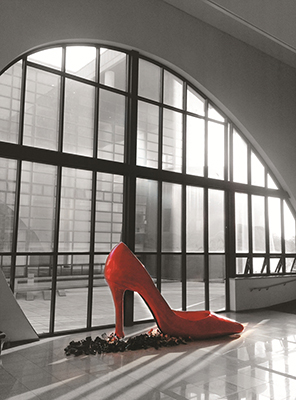
Jennis: How tragic! I think a family’s history can represent an era. My husband’s father also hid in a well to save his life, but he lost his father, who was killed by his neighbor. These painful happenings occurred only a few decades ago in this land. And yet, life should be continuous? Maybe this is why you incorporate a continuous “And And And…” in several of your works.
Lee Maelee: Right. We have many sad histories. The Yeosu-Suncheon Incident, the Jeju 4.3 Uprising, the Korean War, and Gwangju’s May 18 Incident are the stories of our parents and stories that we are still a part of. So, I wrote on canvas these epics of where I came from and where we are heading. Sometimes the writing was in the poetry of Ezra Pound; sometimes it was in the song lyrics of Bob Dylan. But I hoped that the people would not be too obsessed with the text itself. So, I convey the past, present, and future through “And And And…” in this exhibition.
Jennis: How did you start out in contemporary art, in conceptual art? Where did you study? I think you are an uncommon artist in the Gwangju area.
Lee Maelee: I learned from Wollam-ri. I think I would have lost myself if I had studied abroad. I stayed here in Gwangju and the Jeolla area my whole life. So, I have been able to keep myself intact, and I think that this was also the source of the dramatic upsurge in my works.
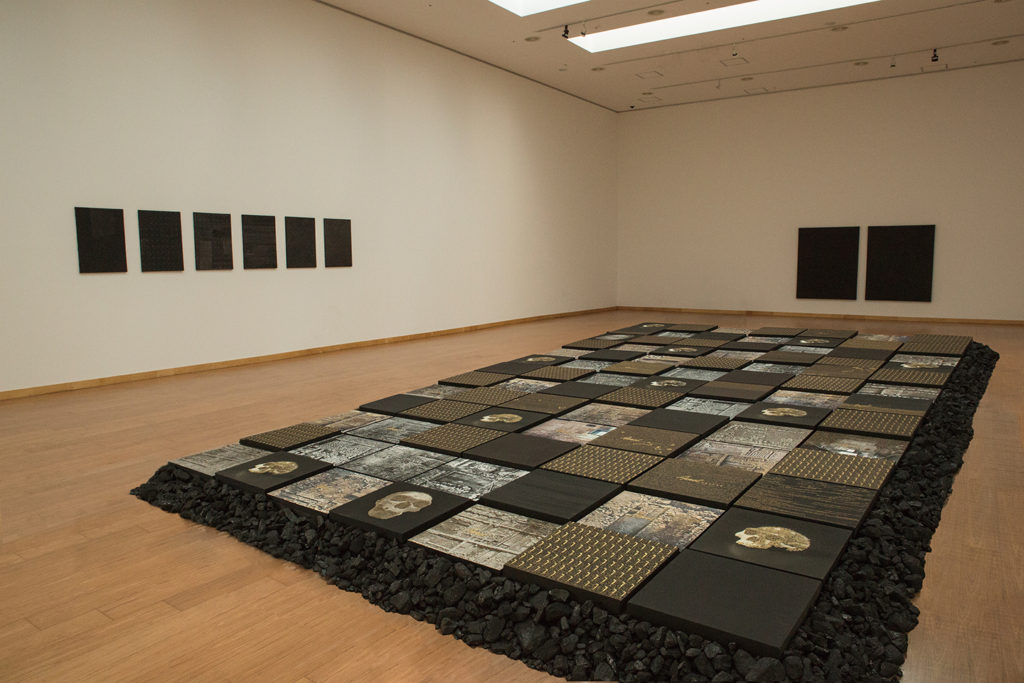
Jennis: I have seen your red high heel sculpture at the Gwangju Museum of Art. How did you get invited for an invitational exhibition in Manhattan, New York?
Lee Maelee: A curator who had majored in Asian art in New York came to Korea to look for an artist to invite. She came to the Gwangju Biennale and asked the Gwangju Museum of Art for recommendations of local female artists. Fortunately, I was selected from among the artists who submitted portfolios to the curator.
Jennis: You must have been very pleased with the invitation to exhibit in New York. How did the New York invitational affect your career?
Lee Maelee: At the time, in the early 2000s, there were several support programs for young artists, but I was considered too old to qualify as a young artist. At this time when I was a bit depressed, the New York invitation brought about a big change in my life. Through the exhibition in New York, I received encouragement and praise from several art critics. Surprisingly, Kim Bo-hyun (a.k.a. Po Kim), who founded Korea’s first art college at Chosun University, came to my exhibition. He was still working on large canvases even though he was almost 90 years old. (I felt shameful in thinking that I was old.) After the New York exhibition, I was invited to exhibit in other cities. Thanks to Gwangju, the international city of art, I could step out into the world.
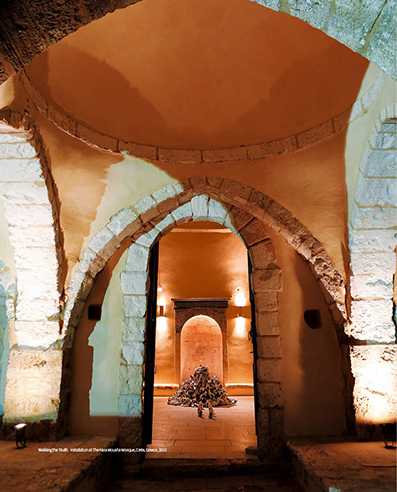
Jennis: As a Gwangju citizen, I am so proud of you. I heard that you have been teaching at Gwangju University and Chosun University. How long have you been lecturing?
Lee Maelee: I have been giving lectures for the past 25 years. I wanted to give my students a chance to study contemporary art in Gwangju without having to go abroad. I feel rewarded in helping young students create newness and seek change.
Jennis: Going forward, what plans or goals do you have in the field of art?
Lee Maelee: I plan to continue to express the history of the strata and the people who lived in them through poetry that inspires me as a messenger of Poetry Delivery, and to continue giving lectures to the next generation.
Jennis: I was able to think about my ancestors, my life, and the next generation while viewing your works. I hope many people will be able to experience the same through your works of poetry. Thank you for your time.
Lee Maelee’s Individual Exhibitions
- Poetry Delivery 2020 (Muan Seungwoo Oh Museum of Art) – 2020
- Portraits of Shoes (Hosim Art Museum, Gwangju) – 2020
- Cantos Space (Woo Jaegil Art Museum, Gwangju) – 2019
- The Book of Life (UM Gallery, Seoul) – 2019
- Poetry Delivery 2017 (Gwangju Art Museum) – 2017
- Walking the Truth (Museum of Contemporary Art of Crete, Greece) – 2015
- Expanding the Paradigm (Donopoulos International Fine Arts, Greece) – 2015
- On the Road to Wisdom (Korean Assembly Building) – 2014
- Portraits of Shoes (Eunam Museum of Art Invitational, Gwangju) – 2013
- Into Great Silence (Space Inno, Seoul) – 2012
- Infinite Space (Chelsea Art Museum Invitational, New York, U.S.) – 2011
- Down and Space (Fei Gallery Invitational, Guangzhōu, China) – 2011
- Melange (Elga Wimmer PCC Invitational, New York, U.S.) – 2010
- Feminine Power and Lee Maelee (Tenri Cultural Institute, New York, U.S.) – 2009
- Lee Maelee’s Paintings (Yi Kang Gallery, Beijing, China) – 2005
- Communication and Desire (The IMC Lab + Gallery, New York, U.S.) – 2004
THE INTERVIEWER
Kang “Jennis” Hyunsuk is a freelance English tutor and once-in-a-while interpreter. She worked for the Asia Culture Center during its opening season and likes to grow greens and walk her dog. Every weekend, she goes to the countryside with her husband and takes photos of nature.





